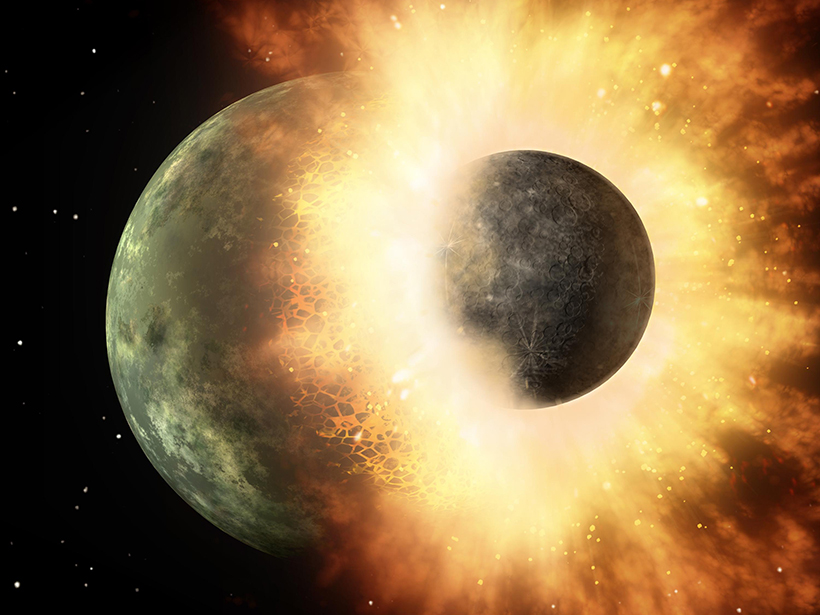Source: Journal of Geophysical Research: Planets
Scientists hypothesize that roughly 4.5 billion years ago, a protoplanet often referred to as Theia struck the newly formed Earth. The impact transferred so much heat to our young planet that a fraction of it melted and vaporized, creating a cloud of debris that quickly coalesced into the Moon.
Such collisions occurred often in the solar system’s youth. Impacts likely explain Mercury’s large core, Pluto’s moons, and the demise of the dinosaurs. Battle wounds can still be easily spotted on the surfaces of Mercury, the Moon, and Mars. Although scientists would like to better characterize the early impacts that literally shaped our solar system, the degree to which rock melts and vaporizes during impacts isn’t well understood because of poorly constrained equations of state.
Connolly set out to refine the equation of state for silica, which was chosen because silica is the most abundant oxide in rocky planets and plays a crucial role in impacts. The author then used the equation of state to create a new model of the silica boiling curve, which terminates at a critical point at about 6000 K.
Because there are no direct measurements of silica at extremely high temperatures and pressures, such conditions must be calculated from thermodynamic data that are extrapolated from much lower temperatures. The author found that at high temperatures, silica liquid boils incongruently such that it becomes depleted in oxygen. As a result, atmospheric loss after a giant impact could enrich residual silicate liquid in reduced silicon.
Improving the equations of state for silicate liquids will help researchers to better model impacts and, ultimately, give us a stronger understanding of the history of our solar system. (Journal of Geophysical Research: Planets, doi:10.1002/2016JE005059, 2016)
—Shannon Hall, Freelance Writer
Citation:
Hall, S. (2016), New insight into silica explains planetary smashup, Eos, 97, https://doi.org/10.1029/2016EO062587. Published on 08 November 2016.
Text © 2016. The authors. CC BY-NC-ND 3.0
Except where otherwise noted, images are subject to copyright. Any reuse without express permission from the copyright owner is prohibited.

